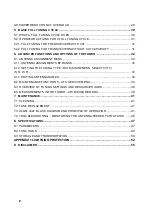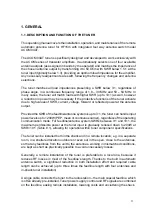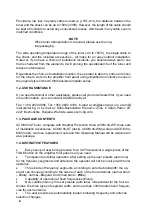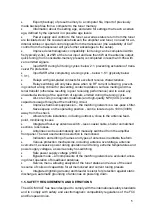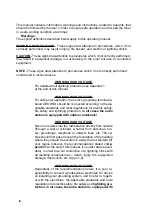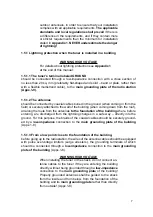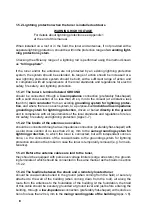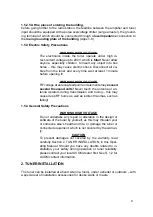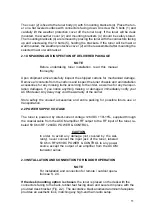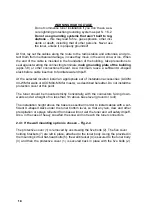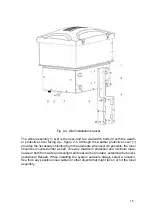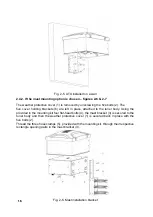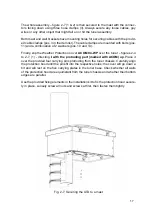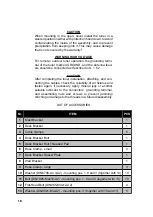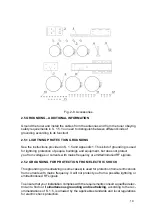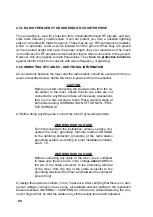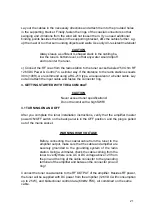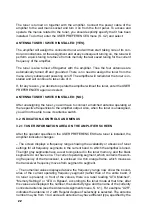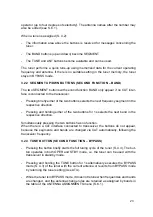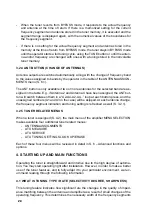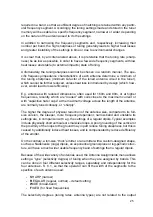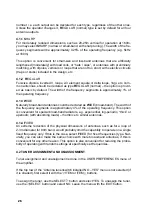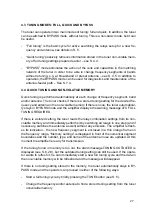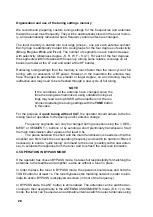
13
After securing the tuner body (1) on the desk (2) by fastening the bracket bolt (4), the
bracket (3) remains hidden from sight – figure 2-3. This ensures both a tidy workspace
and the necessary stability of the tuner body together with up to 5 heavy coaxial cables
connected to the back side.
WARNING HIGH VOLTAGE
For INDOOR tuner operation, the grounding terminal of the
tuner labeled GROUND and the antenna feeders should be
connected as described in S. 1.5.1.
Check if the antenna cables and grounding system of your radio station are installed
as described in S. 1.5.1. Next, connect the grounding terminal (5) of the tuner labeled
GROUND (Fig. 2-3) to the
main grounding plate of the radio station
(appx.1-9).
After connecting the grounding terminal, connect the antenna feeders (up to 4 coaxial
cables) to the respective connectors (6) ANTENNA 1 through 4 on the tuner (Fig. 2-3).
Without powering up the amplifier, use a coaxial cable to connect the tuner HF input (7)
labeled 50Ohm RF +26 VDC POWER & CONTROL (Fig.2-3) to the ACOM transistor
amplifiers output labeled RF OUTPUT.
2.4 INSTALLATION AND CONNECTION FOR OUTDOOR OPERATION
The
wall
and
tower
mounting brackets, provided with your tuner, allow the tuner to be
remotely mounted, reducing losses, installation costs and installation complexity. This
option should always be preferred if applicable. Remote operation drastically reduces
feedline losses, resulting from operating a mismatched coaxial line, leaving only the
inherent losses of the cable, operated in a source-feedline-load matched mode.
NOTE
For installation and connection for indoor operation see S.
2.3.
NOTE
Before commencing tuner installation, carefully consider
and map out the way the coaxial cables run from the ampli
-
fier to the tuner and from the tuner to the antennas, as well
as the manner in which they will enter the shack.
WARNING HIGH VOLTAGE
To prevent accidents, tuner installation and connection to
the grounding and antennas should only be carried out in
clear, quiet and sunny weather
, when there is no danger
of lightning and static discharges.
Life threatening voltages and electrostatic charges may occur in the antenna and the
cables you install, both as a result of a direct lightning strike or by induction after a light
-
ning strike on adjacent objects, and may also be statically induced by charged clouds
or energized by dust storms!
Summary of Contents for ACOM 04AT
Page 1: ...1 ...
Page 57: ...2 2 ...



